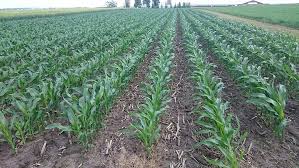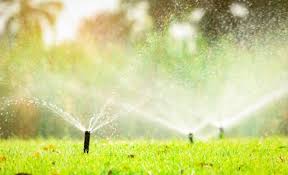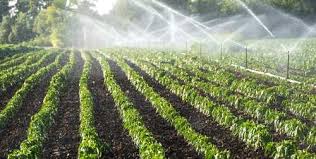Continuous cropping is an agricultural practice that involves growing the same crop on the same land for multiple seasons without allowing the soil to lie fallow. This method has gained popularity due to its potential to maximize yields, reduce production costs, and increase farmers’ income. However, while continuous cropping can lead to higher short-term productivity, it also poses significant challenges, particularly concerning soil health and water management.
Over time, continuous cropping can deplete soil nutrients, increase pest and disease pressures, and lead to soil degradation. Therefore, implementing effective water management techniques becomes crucial to maintaining soil fertility and sustaining crop yields.
Water management in agriculture is essential, especially in regions where water resources are limited or unpredictable. Efficient water management not only ensures the availability of water for crops but also helps prevent soil erosion, salinization, and nutrient leaching. As continuous cropping often requires more water due to the extended growing season, integrating water management practices can enhance the sustainability of this agricultural approach.
One effective water management technique is drip irrigation, which delivers water directly to the root zone of plants. This method minimizes water wastage and ensures that crops receive adequate moisture at critical growth stages. By using drip irrigation in conjunction with continuous cropping, farmers can significantly improve water-use efficiency, leading to healthier plants and better yields.
Another technique is rainwater harvesting, which involves collecting and storing rainwater for agricultural use. This practice can be particularly beneficial in regions with erratic rainfall patterns, allowing farmers to supplement irrigation during dry spells and reduce dependence on groundwater.
Soil moisture monitoring is also crucial in managing water effectively. By utilizing tools such as soil moisture sensors, farmers can assess moisture levels in real time and make informed irrigation decisions. This data-driven approach helps prevent over-irrigation and under-irrigation, which can adversely affect crop health and water resources. In addition, implementing cover crops during off-seasons can improve soil structure and moisture retention, providing additional benefits to continuous cropping systems.
Another important aspect of water management in continuous cropping is the use of crop rotation with deep-rooted plants. Alternating crops that extract moisture from different soil layers can help maintain soil moisture levels while optimizing water use. Deep-rooted crops can access water stored deeper in the soil profile, reducing competition among shallow-rooted crops for limited water resources. This practice not only enhances water availability but also contributes to soil health and biodiversity.
Incorporating conservation tillage techniques can further enhance water management in continuous cropping systems. By minimizing soil disturbance and maintaining crop residues on the soil surface, conservation tillage helps reduce evaporation and increases water infiltration. This practice is particularly beneficial in regions prone to drought, as it allows for better water retention and reduces the need for frequent irrigation.
Benefits of Continuous Cropping

1. Increased Crop Productivity: Continuous cropping can lead to higher yields compared to fallow systems. By growing crops in succession without a break, farmers can maximize land use and generate more produce within a year, leading to improved overall productivity.
2. Efficient Use of Resources: Continuous cropping allows for better resource utilization, including water, nutrients, and labor. The consistent planting schedule helps farmers streamline their operations and reduce downtime, which can enhance overall farm efficiency.
3. Reduced Soil Erosion: Maintaining a cover of crops throughout the year can help protect the soil from erosion caused by wind and water. The continuous root systems of the crops stabilize the soil, improving soil structure and minimizing nutrient loss.
4. Improved Weed Control: Continuous cropping can help suppress weed growth. The regular planting and harvesting of crops can disrupt weed life cycles, making it more challenging for weeds to establish themselves and reducing the need for chemical herbicides.
5. Economic Viability: Continuous cropping can improve the economic viability of farms by providing a steady income throughout the year. This practice can help farmers diversify their income streams and reduce financial risk associated with relying on a single crop.
Challenges of Continuous Cropping
1. Soil Degradation: Continuous cropping can lead to soil degradation over time. The constant removal of crop residues and lack of rest periods can diminish soil organic matter and nutrient levels, ultimately reducing soil fertility.
2. Pest and Disease Pressure: Growing the same crops in succession can increase the risk of pest and disease outbreaks. Continuous cropping can create a favorable environment for pests and pathogens to thrive, necessitating increased pesticide use and management efforts.
3. Water Resource Strain: Continuous cropping can strain water resources, particularly in regions with limited water availability. The ongoing need for irrigation can lead to water depletion and affect the sustainability of farming operations.
4. Nutrient Imbalance: Over time, continuous cropping can result in nutrient imbalances in the soil. Specific nutrients may become depleted, requiring additional fertilizers to maintain crop yields, which can have environmental consequences.
5. Increased Management Complexity: Managing continuous cropping systems can be more complex and labor-intensive. Farmers must stay vigilant about pest management, nutrient applications, and soil health to ensure sustainable productivity.
Read Also: List of “23” Healing Herbs in the Bible
Water Management Techniques Overview

1. Irrigation Systems: Various irrigation methods, such as drip, sprinkler, and surface irrigation, can help optimize water use in continuous cropping systems. Each method has its advantages and suitability based on crop type and local conditions.
2. Rainwater Harvesting: Collecting and storing rainwater can supplement irrigation needs. Implementing rainwater harvesting systems helps capture excess rainfall for later use, reducing reliance on groundwater and improving water availability.
3. Soil Moisture Monitoring: Utilizing soil moisture sensors can help farmers determine when to irrigate. Monitoring soil moisture levels allows for more precise irrigation scheduling, reducing water waste and ensuring crops receive adequate moisture.
4. Conservation Tillage: Practices such as reduced or no-tillage can improve water retention in the soil. Maintaining soil structure and cover can enhance infiltration rates, reducing runoff and promoting better water management.
5. Crop Selection and Rotation: Choosing drought-resistant crop varieties and implementing crop rotation can improve water efficiency. Selecting crops that require less water can help farmers adapt to changing climate conditions and manage water resources more sustainably.
Importance of Water Management in Continuous Cropping
1. Optimizing Crop Yields: Effective water management ensures that crops receive the right amount of water at the right time, promoting healthy growth and maximizing yields. In continuous cropping systems, where crops are grown throughout the year, consistent water supply is crucial for sustaining productivity.
2. Reducing Water Stress: Proper water management practices help mitigate water stress on plants, especially during dry spells or periods of high evaporation. By maintaining adequate soil moisture, farmers can prevent crop wilting and maintain optimal growth conditions.
3. Enhancing Soil Health: Effective water management practices contribute to soil health by preventing waterlogging and erosion. Healthy soil retains moisture better, promoting beneficial microbial activity and nutrient availability.
4. Mitigating Climate Risks: With climate change leading to unpredictable weather patterns, efficient water management can help farmers adapt to these changes. By implementing strategies to capture and store water, farmers can ensure reliable water availability during critical growing periods.
5. Economic Sustainability: Good water management reduces the costs associated with water usage and irrigation. Efficient use of water resources can lower operating costs and improve overall farm profitability.
Irrigation Methods for Continuous Cropping
1. Drip Irrigation: This method delivers water directly to the plant roots through a network of tubes and emitters. Drip irrigation minimizes water loss due to evaporation and runoff, making it highly efficient for continuous cropping systems.
2. Sprinkler Irrigation: Sprinklers distribute water over crops in a manner similar to natural rainfall. This method is versatile and can cover large areas, but it may lead to higher evaporation rates, especially in hot and windy conditions.
3. Surface Irrigation: In this traditional method, water is applied directly to the soil surface and allowed to flow over the field. While it can be effective, surface irrigation can lead to water wastage and uneven distribution if not managed properly.
4. Subsurface Irrigation: This method involves placing irrigation tubes below the soil surface, allowing water to seep into the root zone. Subsurface irrigation reduces evaporation and is particularly useful in arid regions or during drought conditions.
5. Flood Irrigation: Water is flooded over the field, allowing it to soak into the soil. While simple and cost-effective, flood irrigation can lead to waterlogging and inefficient water use if not carefully managed.
Soil Moisture Conservation Strategies
1. Mulching: Applying organic or inorganic materials on the soil surface helps retain moisture, reduce evaporation, and regulate soil temperature. Mulching also suppresses weed growth and improves soil structure.
2. Cover Cropping: Planting cover crops during off-seasons or between main crops enhances soil moisture retention. The roots of cover crops improve soil structure and reduce erosion while adding organic matter to the soil.
3. Conservation Tillage: Reducing tillage intensity or adopting no-till practices helps maintain soil structure and moisture levels. Conservation tillage minimizes soil disturbance, preserving moisture and enhancing water infiltration.
4. Contour Farming: This technique involves planting crops along the contours of the land to reduce runoff and soil erosion. Contour farming can improve water retention in the soil and maximize the use of available water resources.
5. Water Harvesting: Implementing water harvesting techniques, such as building ponds or rainwater catchment systems, can help collect and store excess rainfall for use during dry periods, enhancing soil moisture availability.
Read Also: 11 Medicinal Health Benefits of Centaurea Montana (Mountain Knapweed)
Crop Rotation and Water Efficiency

1. Diversification of Water Use: Crop rotation allows for the cultivation of various crops with different water requirements. By alternating crops, farmers can optimize water use and reduce competition for moisture, improving overall water efficiency.
2. Enhanced Soil Structure: Rotating crops can improve soil structure and health, promoting better water infiltration and retention. Diverse root systems contribute to a healthier soil environment that supports moisture retention.
3. Reduced Pest and Disease Pressure: Crop rotation helps disrupt the life cycles of pests and diseases that thrive in continuous cropping systems. Healthy crops are better at utilizing water, leading to improved overall water efficiency.
4. Drought Resilience: Including drought-resistant crops in rotation plans can enhance water efficiency. These crops require less water, making them ideal for maintaining productivity during dry periods.
5. Improved Nutrient Cycling: Different crops have varying nutrient requirements and uptake patterns. By rotating crops, farmers can enhance nutrient cycling and reduce the need for additional irrigation, promoting water efficiency.
Rainwater Harvesting Techniques
1. Rooftop Rainwater Harvesting: This method involves collecting rainwater from rooftops and directing it into storage tanks. By using gutters and downspouts, farmers can capture significant amounts of rainwater for irrigation, reducing dependency on other water sources.
2. Surface Runoff Harvesting: This technique captures and channels surface runoff from fields or paved areas into storage ponds or reservoirs. By creating contour bunds or trenches, farmers can slow down runoff, allowing water to percolate into the soil and recharge groundwater supplies.
3. Infiltration Pits: Farmers can dig pits or trenches filled with gravel to enhance water absorption into the soil. These pits capture rainwater, allowing it to slowly seep into the ground and improve soil moisture levels.
4. Check Dams: Small check dams built across streams or drainage channels help slow down water flow, allowing rainwater to collect and seep into the soil. This technique is especially beneficial in hilly or sloped areas, reducing soil erosion and increasing water availability.
5. Percolation Tanks: Constructed in areas where water can percolate easily, these tanks capture excess rainwater and facilitate groundwater recharge. Percolation tanks help improve local water tables and increase soil moisture for agricultural use.
Drip Irrigation: A Precision Approach
1. Efficient Water Delivery: Drip irrigation delivers water directly to the root zone of plants through a network of tubes and emitters. This targeted approach minimizes evaporation and runoff, ensuring that water is used efficiently.
2. Reducing Water Waste: By providing water in small amounts at frequent intervals, drip irrigation reduces the amount of water wasted. This system can apply precise amounts based on plant needs, leading to significant water savings compared to traditional irrigation methods.
3. Enhanced Nutrient Uptake: Drip irrigation can be combined with fertigation, allowing farmers to deliver fertilizers directly to the plant roots along with water. This practice promotes better nutrient uptake, leading to healthier crops and improved yields.
4. Adaptability to Various Crops: Drip irrigation is suitable for a wide range of crops, including fruits, vegetables, and field crops. Its flexibility makes it an ideal choice for diverse agricultural systems and varying crop water requirements.
5. Soil Moisture Monitoring: Modern drip irrigation systems can be equipped with sensors to monitor soil moisture levels, ensuring that water is applied only when needed. This precision management optimizes water use and reduces labor costs.
Impact of Climate on Water Management
1. Variability in Precipitation Patterns: Climate change can lead to unpredictable rainfall patterns, causing droughts or excessive rainfall. Farmers must adapt their water management strategies to cope with these changes, utilizing techniques like rainwater harvesting and efficient irrigation systems.
2. Increased Evaporation Rates: Rising temperatures can result in higher evaporation rates from soil and water bodies, reducing available water for crops. Implementing water-saving technologies, such as drip irrigation and mulching, becomes essential to maintain soil moisture.
3. Altered Growing Seasons: Changes in climate can affect the timing of planting and harvesting seasons. Farmers may need to adjust their water management practices to align with these changes, ensuring crops receive adequate moisture throughout their growth stages.
4. Water Quality Concerns: Climate impacts can lead to water quality issues, such as increased salinity or contamination from runoff. Effective water management practices must include measures to protect water quality, ensuring safe irrigation water for crops.
5. Enhanced Soil Conservation Needs: Climate-induced erosion and degradation of soil can necessitate more robust soil conservation strategies. Practices such as cover cropping, contour farming, and water harvesting must be integrated to improve soil health and resilience to climate variability.
Do you have any questions, suggestions, or contributions? If so, please feel free to use the comment box below to share your thoughts. We also encourage you to kindly share this information with others who might benefit from it. Since we can’t reach everyone at once, we truly appreciate your help in spreading the word. Thank you so much for your support and for sharing!
Read Also: Product Classification of Industrial Products
Frequently Asked Questions
We will update this section soon.

